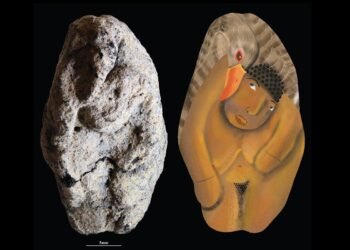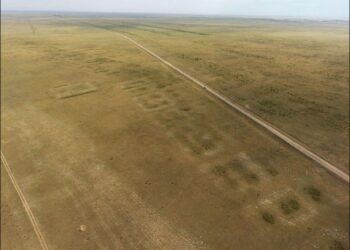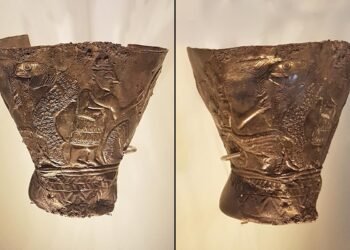The possible final resting place of Cerdic, the enigmatic founder of the Kingdom of Wessex and a pivotal figure in post-Roman British history, has emerged more than a millennium after it was named in an ancient royal charter.

Cerdic, often depicted as a Dark Age warrior akin to King Arthur, rose to prominence in the sixth century through a series of bloody battles in Hampshire, according to findings reported by multiple sources.
Inspired by the research of academic George Grundy, author and historian Paul Harper led an investigation that uncovered a burial mound believed to correspond to Cerdic’s Barrow, mentioned in a 10th-century charter granted by King Edward the Elder to Winchester Cathedral. The charter delineated the boundary of land, referencing ‘Ceardices Beorg’ or ‘Cerdic’s Barrow,’ within what is now St Mary Bourne parish in Hampshire.
While traditionally regarded as an Anglo-Saxon invader, Cerdic’s Brittonic name and those of his descendants suggest a more complex narrative, potentially indicating relations between Anglo-Saxon and indigenous British cultures.

The investigation identified the location of the barrow near Andover in Hampshire by tracing landmarks mentioned in the ancient charter, including the Roman Road, a Willow Grove, and a Barrow of the Ash Tree. It is believed that Cerdic was buried in a newly constructed mound or a reused Bronze Age barrow, a common practice during the early Anglo-Saxon period.
According to Harper, the placement of Cerdic’s Barrow was a deliberate statement of power, strategically located near ancient roads and a massive Offa’s Dyke style ditch, serving as a warning to his rivals. Additionally, references to wooded enclosures associated with deer hunting in the charter suggest sentimental value for Cerdic in this corner of Hampshire.

Harper’s research, detailed in his new book, delves into Cerdic’s emergence from the chaos following the collapse of the Western Roman Empire. He rose to power with the Gewisse, offering protection to civilians and engaging in territorial conflicts with Anglo-Saxon and Romano-British kingdoms. Despite facing unprecedented challenges such as climate disasters and pandemics, Cerdic carved out a realm that would shape Britain’s history.
The investigation addresses various myths and folklore associated with him, including connections to the King Arthur legend. The book explores the identity of Cerdic’s shadowy son Creoda, the locations of his battles against rival warlords, and their links to medieval poems such as the Elegy for Geraint.
Harper hopes that future archaeological surveys of the site, with permission from landowners, will further uncover the secrets of Cerdic’s legacy.























